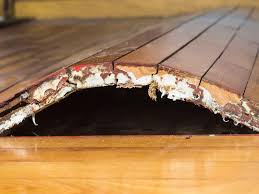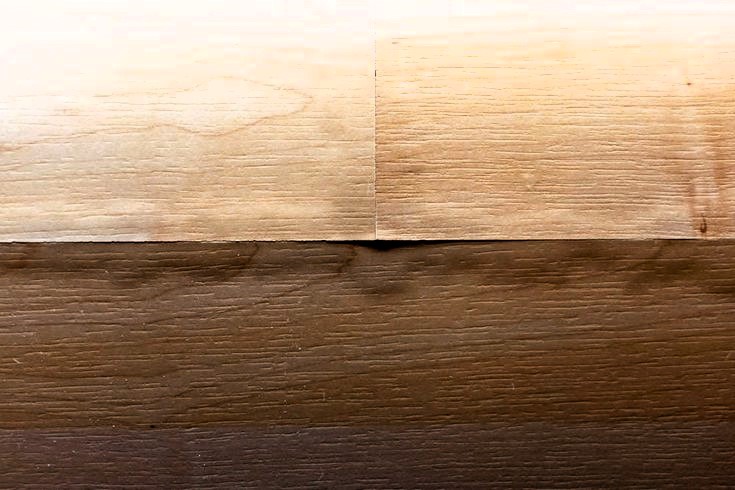Learn How To Fix Water Damaged Swollen Wood Furniture: Wooden furniture is not just functional; it often holds sentimental value and enhances the aesthetic appeal of our homes. However, water damage can mar its beauty and structural integrity. Whether caused by flooding, spills, or prolonged humidity exposure, water damage can lead to swelling, discoloration, and warping of the wood. This comprehensive guide will help you restore water-damaged swollen wood furniture to its original state, preserving both its appearance and value.
To repair water-damaged swollen wood furniture, dry thoroughly, use an iron to remove bubbles, sand the surface, apply wood filler, and finish with appropriate sealants.

Identifying and Assessing Water Damage Signs of Water Damage:
- The first step in restoring water-damaged furniture is identifying the damage. Common signs include bubbling or peeling paint, noticeable watermarks, discoloration, swelling, and mold growth. The presence of these symptoms indicates that the wood has absorbed moisture, causing it to expand and lose its shape.
- To assess the extent of the damage, check how deep the water stains penetrate and whether the wood feels soft or spongy to the touch. It’s also important to consider the type of wood, as different woods react differently to water damage. For instance, hardwoods like oak may resist swelling better than softer woods like pine, but all can suffer from prolonged exposure to moisture.
Step-by-Step Repair Guide How To Fix Water Damaged Swollen Wood Furniture
Dry the Furniture Thoroughly
- Methods: The drying process is crucial to prevent further damage and mold growth. Place the furniture in a well-ventilated area with plenty of airflow. Using electric fans or a dehumidifier can help accelerate the drying process. If the weather permits, you can also place the furniture outside, but be cautious of direct sunlight, which can cause the wood to dry too quickly and crack.
Use an Iron for Swollen Wood
- Method: One effective method to address swelling is using an iron. Set the iron to a low heat setting, then place a clean, damp cloth over the swollen area. Gently iron over the cloth, which helps the moisture evaporate from the wood, reducing swelling. Be careful not to apply too much heat or leave the iron in one spot for too long, as this can damage the wood further.
Sanding the Surface
- Tools and Techniques: Once the furniture is thoroughly dried, sanding is the next step. Start with coarse-grit sandpaper to remove the damaged finish and swollen wood fibers. Gradually move to finer grits to smooth the surface. Sanding not only removes the damaged areas but also prepares the wood for refinishing. Ensure that the sanding is even to avoid an uneven surface.
Applying Wood Filler and Finishing
- Application: After sanding, inspect the surface for any deep cracks or holes. Fill these with a high-quality wood filler, applying it with a putty knife. Once the filler is dry, sand it down to match the rest of the surface. This step is crucial for restoring the furniture’s smooth finish. Finally, apply a wood stain or paint that matches the original finish. A protective sealant or varnish can also be applied to prevent future water damage.
reventing Future Water Damage Protective Measures:
- Using Oil Finishes: Applying oil finishes like tung oil or linseed oil can provide a protective barrier against moisture. These oils penetrate the wood and create a water-resistant layer, helping to prevent swelling and warping.
- Sealing the Wood: Sealants are essential for creating a waterproof barrier on the wood surface. They help to lock in moisture and prevent further damage. There are various types of sealants available, including polyurethane and varnish.
- Stain-Sealant Products: Combining staining and sealing in one product can be a convenient way to protect wood furniture. These products penetrate deep into the wood, providing color and protection against water damage.
Caring for Wooden Furniture Maintenance Tips:
- To prevent water damage in the future, use coasters for drinks and mats under plants. Avoid placing furniture in direct sunlight, and maintain a consistent indoor humidity level. Regular dusting and cleaning with a damp microfiber cloth can help preserve the wood’s finish. For deeper cleaning, use a solution of water and mild vinegar.
Conclusion
Restoring water-damaged swollen wood furniture is a detailed process that requires patience and the right tools. By following these steps, you can bring your cherished pieces back to life and protect them from future damage. If the damage is extensive or you’re unsure about the restoration process, consider consulting a professional. For expert assistance, contact a water damage restoration service.
FAQs of How To Fix Water Damaged Swollen Wood Furniture
- Can water-damaged wood furniture be restored?
- Yes, water-damaged wood furniture can often be restored, especially if the damage is detected early. The restoration process involves drying, sanding, filling, and refinishing the wood. However, severe structural damage may be challenging to repair fully.
- Does swollen wood shrink back?
- Swollen wood can sometimes shrink back as it dries, but this process can be unpredictable. It’s important to dry the wood slowly and evenly to prevent cracking. If the wood does not return to its original shape, sanding and reshaping may be necessary.
- How do you fix water-damaged swollen wood cabinets?
- To fix water-damaged swollen wood cabinets, follow these steps: dry the cabinets thoroughly, use an iron or hairdryer to remove swelling, sand the affected areas, fill any cracks with wood filler, and apply a finish to protect the wood.
- How long does swollen wood take to dry?
- The drying time for swollen wood depends on the extent of the damage and environmental conditions. It can take anywhere from 24 hours to several days. Using fans, dehumidifiers, and maintaining good ventilation can help speed up the process.
- Is swelling of wood reversible?
- Swelling in wood due to water absorption can sometimes be reversed by careful drying. However, if the wood has been severely warped or cracked, full restoration may not be possible. Sanding and reshaping can help restore the appearance and functionality of the wood.
For more comprehensive solutions and professional assistance, consider reaching out to a water damage restoration service to ensure your furniture is restored to its best condition.

